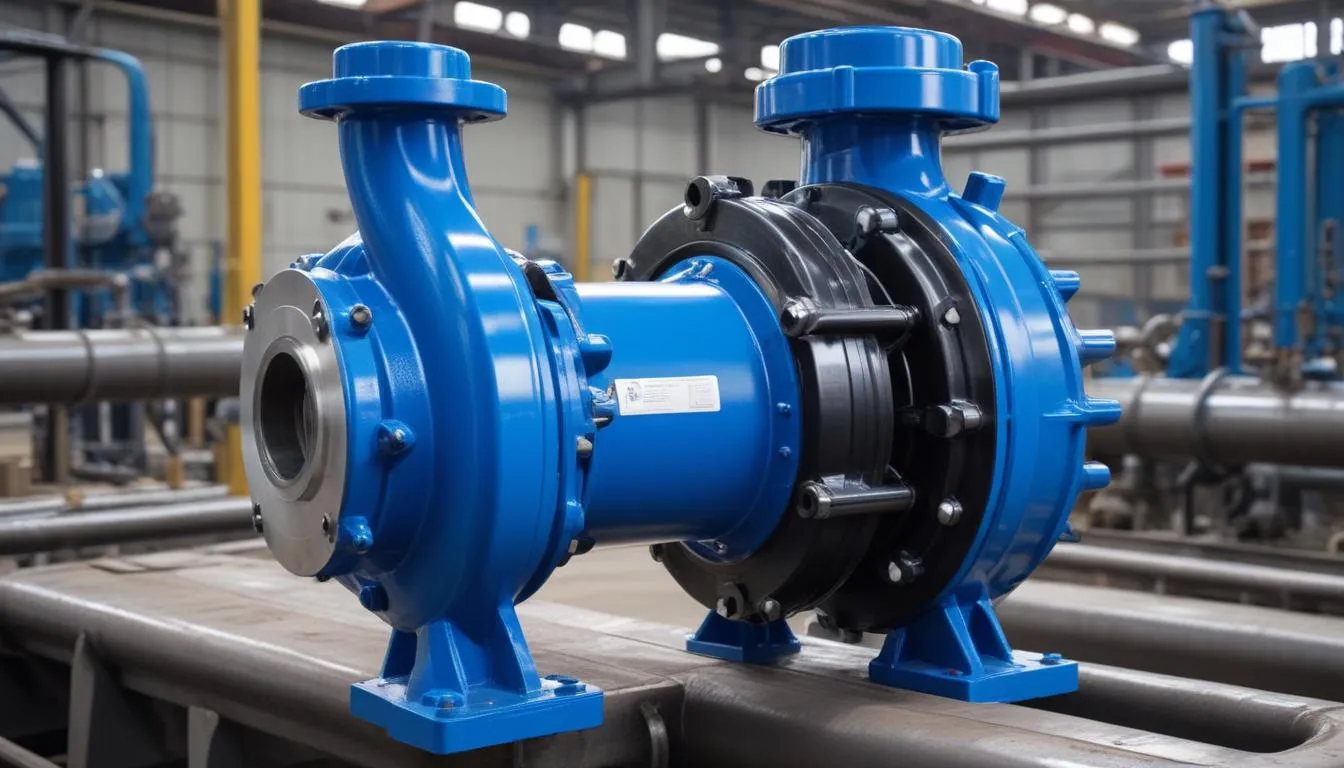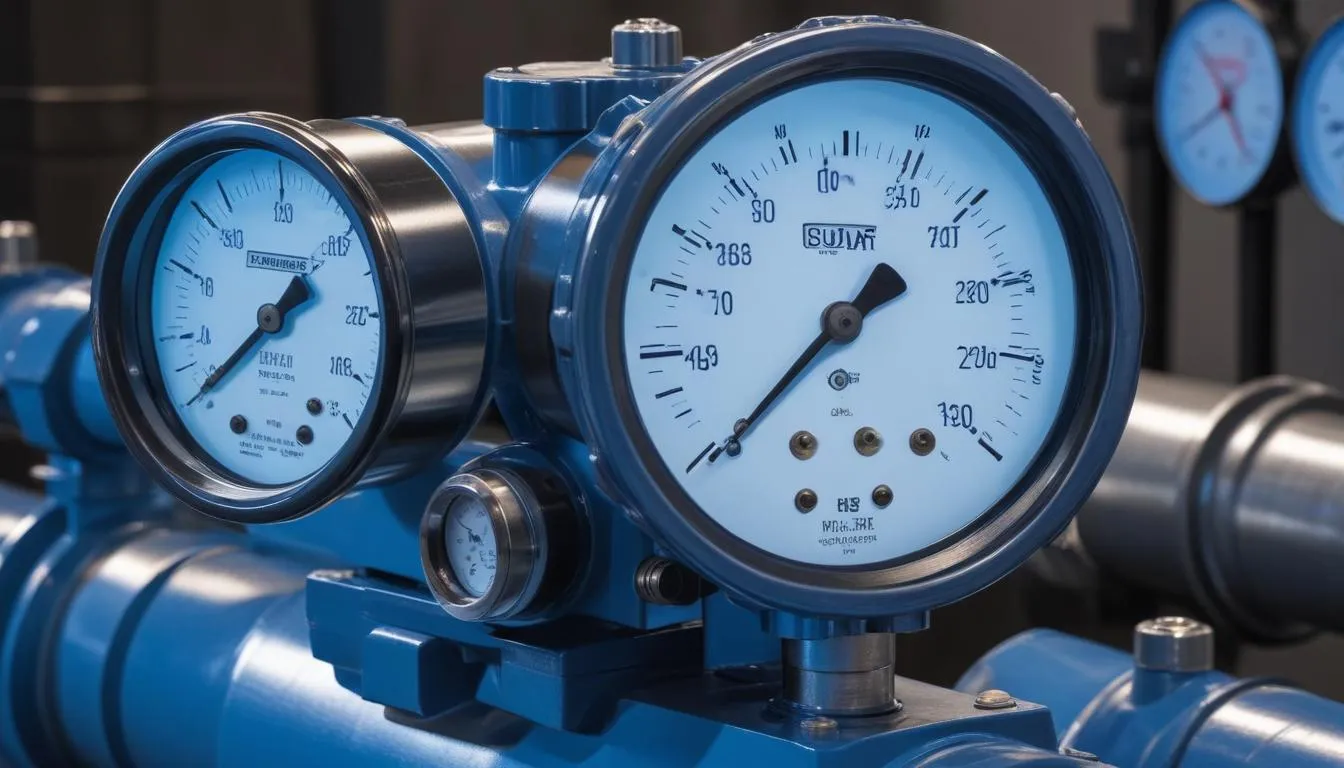 Several key factors play a crucial role in pump flow regulation across various applications. Understanding these factors can greatly enhance the efficiency and reliability of pumping systems.
Several key factors play a crucial role in pump flow regulation across various applications. Understanding these factors can greatly enhance the efficiency and reliability of pumping systems.
- System Design: Proper design of the entire pumping system is fundamental. This includes pipe size, layout, and alignment, which all influence flow characteristics. An optimized design minimizes losses and ensures effective flow regulation.
- Fluid Properties: The viscosity, density, and temperature of the fluid being pumped significantly affect flow rates. Knowing these properties helps in selecting suitable pumps and regulation techniques.
- Pump Selection: Choosing the right type of pump—whether it’s centrifugal, positive displacement, or others—is essential. Each type offers different flow regulation capabilities suitable for specific applications.
- Control Systems: Advanced control systems play a pivotal role in maintaining desired flow rates. These systems can include variable frequency drives (VFDs) and automated actuators that allow for precise monitoring and adjustments.
- Operating Conditions: Environmental factors such as temperature and pressure affect pump performance. Regular monitoring and adjustments may be required to maintain efficient operation under varying conditions.
- User Requirements: Specific application needs also dictate flow regulation strategies. For instance, processes requiring constant flow will implement different techniques compared to those that can accommodate variable flow.
By addressing these factors, industries can optimize their pump flow regulation systems, leading to better performance and reduced operational costs.
Types of Pump Flow Regulation Methods
There are several methods used to achieve effective regulation of pump flow, each tailored to specific applications and operational requirements. Understanding these techniques is essential for optimizing performance and ensuring reliability.
1. Throttling: This common method involves partially closing a valve on the discharge side of the pump. By restricting flow, the resistance increases, controlling the output flow rate. While throttling is simple and cost-effective, it can lead to energy losses and should be used judiciously.
2. Variable Frequency Drives (VFDs): VFDs adjust the motor speed, allowing for precise control of the pump output. This technique is increasingly favored for its energy efficiency, as it minimizes unnecessary energy consumption by matching the pump operation to the system’s flow demands.
3. Bypass Lines: In this method, excess flow is directed back to the source or a holding tank through a bypass line. This technique prevents over-pressurization and allows for stable flow control without adding significant load to the pump.
4. Multi-Speed Pumps: These pumps can operate at different speed settings, providing flexibility in flow regulation. This method is particularly useful in applications where varying flow rates are needed throughout the pumping process.
5. Control Valves: Utilizing control valves in conjunction with other regulation methods enhances flow control. These valves can automatically adjust to maintain a set flow rate based on feedback from flow meters or level sensors, thereby ensuring optimal system performance.
6. Pulsation Dampeners: In systems where pulses can cause fluctuations in flow rates, pulsation dampeners help smooth out these variations. This regulation technique is especially critical in positive displacement pumps, where pressure and flow can experience abrupt changes.
Each of these techniques can be deployed based on the specific needs of the application and the overall design of the pumping system. Employing the right method not only enhances pump flow regulation but also contributes to the longevity of the system and reduces maintenance costs. The selection of the appropriate flow regulation technique will depend on factors such as fluid properties, operating conditions, and the required precision of flow control.
Best Practices for Effective Flow Control
Effective flow control is essential in ensuring the optimal performance and longevity of pumping systems across various applications. Implementing best practices in pump flow regulation can lead to significant improvements in both operational efficiency and cost savings.
- Regular Maintenance: Consistent maintenance schedules for pumps and associated components are vital. Regular inspection, cleaning, and replacement of worn parts help maintain the system’s efficiency and prevent unexpected failures.
- Calibration of Control Systems: Accurate calibration of control systems, including flow meters and feedback loops, ensures that the pump operates within the desired parameters. Regular checks and adjustments are essential to maintain precise flow control.
- Data Monitoring and Analysis: Leveraging advanced monitoring technologies enables real-time data collection on pump performance. Analyzing this data can identify trends, optimize performance, and promote proactive adjustments to flow regulation techniques based on current needs.
- Training and Best Practices for Operators: Well-trained personnel can significantly influence the success of flow regulation. Providing training on the operation of pumps, understanding flow characteristics, and recognizing signs of inefficiency equips operators to manage flow regulation effectively.
- Selection of Appropriate Regulation Techniques: Choosing the most suitable techniques for flow regulation—whether it’s throttling, VFDs, or control valves—based on application needs is crucial for achieving optimal performance. Each technique has its advantages and should be aligned with specific operational requirements.
Incorporating these best practices into daily operations can significantly enhance pump flow regulation. Understanding the importance of maintenance, calibration, data analysis, and operator training ensures that the pumping system operates efficiently, reducing the risk of downtime and costly repairs, thus maximizing productivity across various applications.
Common Challenges in Pump Flow Regulation
 The regulation of pump flow is often met with several challenges that can hinder performance and increase operational costs. Understanding these challenges is crucial for developing effective solutions.
The regulation of pump flow is often met with several challenges that can hinder performance and increase operational costs. Understanding these challenges is crucial for developing effective solutions.
- Pressure Fluctuations: Variability in the pressure levels can lead to inconsistent flow rates. Pressure changes are common in systems where demand can shift rapidly or where there are loads affecting the pump’s output. Managing these fluctuations requires careful monitoring and often the integration of advanced control systems.
- Pump Cavitation: Cavitation occurs when vapor bubbles form in the pump due to low pressure and then collapse, which can cause significant damage to the impeller and other components. It can severely affect pump performance and flow regulation, necessitating a need to adjust operational parameters to prevent its occurrence.
- Viscosity Changes: Variations in the fluid’s viscosity, often due to temperature changes or composition, can complicate flow regulation. Pumps may not perform optimally if the fluid characteristics are not within the expected range, leading to inefficient operation and the potential for failures.
- Wear and Tear: Over time, components such as seals, bearings, and impellers experience wear from continuous operation. This degradation can affect the efficiency and effectiveness of flow regulation, resulting in leaks, reduced performance, and increased maintenance costs.
- Control System Integration: As pumping systems incorporate more sophisticated control mechanisms, challenges arise in integrating these systems. Ensuring compatibility between old equipment and newer control technologies can be a hurdle that complicates flow regulation efforts.
- User Demand Variability: In many applications, user requirements can change unexpectedly, creating challenges for maintaining consistent flow rates. Systems need to be flexible enough to adjust to these changes quickly while still preserving efficiency.
- Regulatory Compliance: Many industries are subject to regulations that govern operating parameters, fluid handling, and environmental discharge. Ensuring compliance while maintaining effective pump flow regulation can be a complex challenge for operators.
Addressing these challenges requires a multifaceted approach, utilizing robust monitoring systems, regular maintenance, and appropriate flow regulation techniques that can adapt to changing conditions. Implementing proactive strategies can significantly enhance the reliability and efficiency of pump systems across various applications.
Future Trends in Pump Flow Management
Emerging trends in the management of pump flow are significantly shaping the future of fluid handling across various industries. As technology advances, the focus on enhancing efficiency, sustainability, and adaptability in pump flow regulation becomes paramount. Key trends to watch include:
- Increased Use of Artificial Intelligence (AI): AI technologies are being integrated into pump systems for predictive maintenance and optimization of flow regulation techniques. By analyzing historical data and real-time information, AI can identify patterns and predict potential failures, allowing for timely interventions and minimizing downtime.
- Internet of Things (IoT) Integration: IoT devices enable real-time monitoring and control of pumping systems. By connecting pumps to the internet, operators can access performance data from remote locations, facilitating immediate adjustments to flow regulation based on current conditions and operational demands. This connectivity enhances decision-making and operational efficiency.
- Energy Efficiency Initiatives: With increasing energy costs and environmental regulations, there is a strong push towards energy-efficient pumping solutions. Technologies such as variable frequency drives and energy-efficient pump designs are being adopted more widely to optimize energy consumption while maintaining effective flow regulation.
- Sustainability and Environmental Considerations: The focus on sustainable practices is influencing pump flow management. Organizations are prioritizing pumps that not only comply with environmental standards but also contribute to reducing resource consumption. This includes using materials that enhance pump efficiency and implementing recycling measures for pump systems.
- Advanced Control Strategies: New control strategies, including model predictive control (MPC) and adaptive control, are gaining traction. These methods offer the ability to automate flow adjustments based on predicted future states of the system, leading to more precise and efficient flow regulation under varying operational conditions.
- Smart Maintenance Solutions: The rise of smart maintenance technologies, including condition monitoring and automated diagnostics, allows for proactive maintenance of pumps. These solutions minimize manual inspections and lead to improved reliability in pump flow regulation by addressing issues before they escalate.
- Data Analytics and Big Data: The application of big data analytics in pump management enables better understanding of flow behaviors and operational trends. By analyzing large datasets, organizations can identify inefficiencies, optimize operation strategies, and improve overall flow regulation effectiveness.
These trends highlight a shift towards a more interconnected, efficient, and sustainable approach to pump flow management. As industries continue to evolve, the adoption of these innovations promises to enhance pump flow regulation techniques, providing greater adaptability and efficiency in various applications.